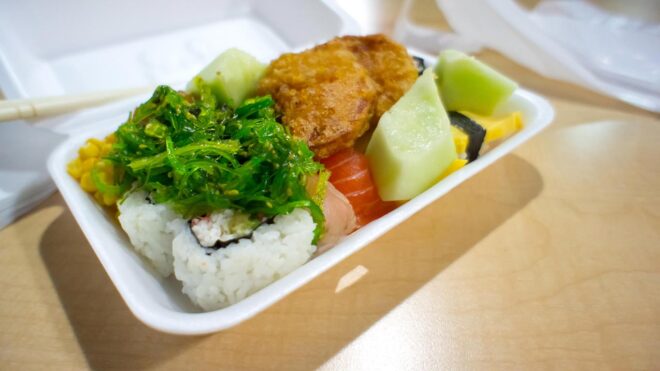Revenue streams restaurants can add to their business
Editorial Team
5 min read
The restaurant industry has notoriously thin profit margins, which is why so many business owners in this segment look for multiple revenue channels. There are a number of ways to diversify sales in the restaurant industry–from catering to merchandising to take-home food items.
Figuring out which opportunities are right for your eatery can help increase profitability and bring in new customers. Here’s where to start.
What are the benefits of additional revenue streams?
Any business that successfully launches new revenue streams can benefit from increased profit, new customers, and a financial safety net in case something goes wrong. In the restaurant industry, expanding beyond dine-in sales can help your business survive economic downturns or unexpected situations, like broken kitchen equipment, employee turnover, or even a pandemic.
Alternative restaurant revenue streams can also help expand your customer base. Through offerings such as meal kits, catering, or wholesaling, restaurants can reach customers outside the dining room and build loyalty in new market segments. Different revenue channels also set up your restaurant to adopt as customer tastes change. For example, offering new options like takeout or subscriptions caters to the convenience-seeking demographic.
Lastly, by offering additional services like catering or selling merchandise, restaurants can more efficiently use their existing kitchen space, staff, and inventory, maximizing their resources throughout the day or week. What’s more, certain restaurant revenue-generating ideas give you a way to test new dishes, tools, or experiences before launching them to other markets. And, if an idea doesn’t go over well in one sales channel, there may be no need to carry it over to your other revenue channels.
6 examples of revenue streams for restaurants
Here are some restaurant revenue-generating ideas that could work at your establishment,
1. Meal kits
Brands like Blue Apron and HelloFresh popularized meal kits, but more and more restaurants are also selling curated kits for aspiring at-home chefs. Meal kits are an easy revenue stream to add: You already have the ingredients in your inventory and recipes in your kitchen. Combine these elements into a ready-made meal kit you can sell online.
If meal kits don’t fit the vibe of your restaurant, consider offering a restaurant subscription. Restaurant subscriptions allow your customers to pay you a fixed monthly fee in exchange for a set number of meals, drinks, or other items at your restaurant. It’s a good way to secure predictable, recurring income and control costs.
2. Wholesale or deli items
Is there a special sauce, spread, or salad dressing that keeps customers coming back for more? Consider selling your most popular ingredient as a deli or grocery item. Eataly is a restaurant that does this on a large scale, but your restaurant can start small. With this model, you’re not giving away grandma’s secret recipe—but you are offering it for diners to enjoy on demand.
A more ambitious restaurant revenue-generating idea is to try to place your recipes in grocery store chains or retailers like Amazon Fresh. For example, New York-based Table 87 Coal Oven Pizza received $250,000 from investors to freeze-dry and package single slices and full pizzas. Table 87 is now available in the freezer sections of Walmart, Wegmans, and Whole Foods stores—gaining traction with customers who have never visited the restaurant in person.
3. Catering
Getting into the catering industry can require a big investment in money and time. As an additional revenue stream for your restaurant, it’s more realistic to offer catering for one-off or special events. Corporate events, festivals, or pop-up events are all good opportunities to boost sales and reach new customers.
4. Merchandise
Selling hats, tote bags, and t-shirts with your restaurant name has two benefits. One, of course, is that you open a new revenue stream. The second is the free marketing from customers wearing your logo and branding in public. Set up a simple online store using Clover’s integration with BigCommerce. Clover makes it easy to start selling restaurant merchandise quickly and manage your inventory from one dashboard, with one payment processor.
5. Events
In addition to catering off-site events, consider hosting cooking classes and other events in your restaurant. You have a kitchen, the right equipment, and an experienced chef available. Utilize these resources to open additional revenue streams such as bartending, knife skills, or pastry-making classes.
READ: Hosting a class to grow your restaurant & bar sales
6. Gift cards
Physical and virtual gift cards are a simple way to open new restaurant revenue streams. In the US market alone, gift cards generated a revenue of nearly 500 million in 2022. Gift cards provide an immediate source of revenue even when a customer may not use them for weeks or months into the future. These cards are also a good way to bring in new customers.
READ: Best practices for gift cards
New revenue streams: multi-channel vs. multi-location
Restaurant revenue streams don’t have to come from launching new products or services. Opening a new location is another way to increase sales. Multi-location restaurants tend to have multiple revenue streams as well as generate revenue at more than one location, multiplying the streams by another factor.
When is the right time to expand your restaurant to new locations? There’s no single best answer. Look at your metrics like your cash flow, customer retention, and market trends to forecast your sales and determine when is the best moment to investigate whether expanding is the right option.
READ: How to expand your restaurant to another state
Accept payments across revenue channels
Before expanding your revenue streams, make sure you have the right tools in place to manage bookkeeping, accept payments, and track sales. Clover’s restaurant POS system enables restaurant owners to accept all payment types and see sales from across restaurant locations and revenue channels. Whether you decide to sell merchandise online or host a pop-up event at a farmer’s market, Clover’s POS system unifies inventory tracking and reporting so you can see where you stand at all times.
Learn more about Clover’s suite of tools for restaurant owners by getting in touch with sales.
Related Posts
Five apps that’ll up your food service delivery game
Full Service Restaurants (FSR)
6 tactics for unifying the front and back of house for restaurants
Popular Topics
Stay in touch
Sign up and learn more about Clover.
Thank you for your subscription!
More posts about starting a small business
eBook





